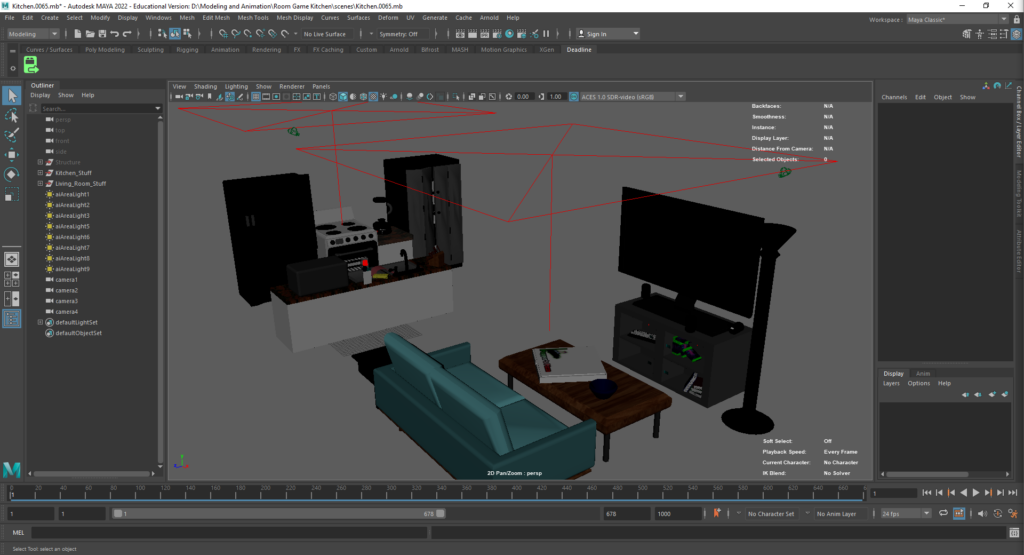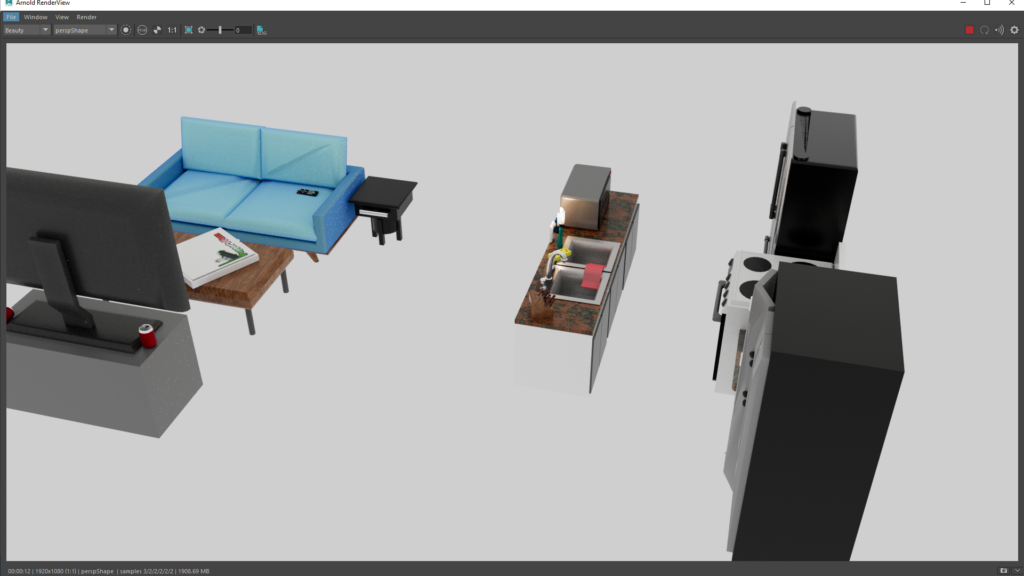Cycle 3 Final Presentation, Gabe Carpenter, 4/27/2022
Posted: April 28, 2022 Filed under: Uncategorized Leave a comment »In cycle 3 I wanted to bring everything together. In cycle one I provided the proof of concept of using physical controls to interact with a virtual environment, and that I could create these physical tools out of almost anything. In cycle 2, I demonstrated how these tools could be used to control a game environment, however the environment was very limited and lacked sound. For cycle 3, I really wanted to turn up the heat. My game is based on another popular series called I’m on Observation Duty, and shares many of the same concepts. My cycle 3 presentation includes a small story, 3 rooms to play in, and 9 different anomalies to find.
The first step, and arguably the most difficult step, was the animation and modeling itself. I used Maya 2022, as with previous cycles. Each asset in each of the three scenes was modeled from scratch, and no third party assistance was used in the creation of the game world. This meant that a majority of my time was spent modeling and rendering.





The three images above show a raw view of the newly modeled environments. For a look at the absent third room, check out my cycle 2 post where I go more in depth on that room specifically. The last step of the animation process was to choose the placement of the cameras, one of which you can see in the third image above. These were a bit challenging, as I wanted to give the player enough vision to complete the task of the game without giving too much to focus on at once. Texturing and lighting also took a good deal of my time, as I wanted to make things look realistically lit for a night time setting.
The next step was to get the sound and video assets for the final patch. The process I used involving taking multiple renders of each anomaly from each of the camera locations, and stitching them together as one large MP4. In the end, each camera was comprised of a 4 minute video. The Isadora patch would then allow the user to simply switch between which video they were viewing. I then needed to include sound. The music for the game was obtained through a royalty free music sharing platform, and the voice acting was done by good friend Justin Green. His work is awesome!
Finally, I needed to write the Isadora patch.

The full patch will be linked here. The patch is split up into 4 sections. The bottom left is the control scheme, comprised of keyboard watchers and global value receivers. The right side is all of the video and sound assets, as well as the timers and triggers that control how they are seen. The upper left is each of the anomalies, and triggers to allow the win condition to understand if the player reported correctly or not. The very top of the patch is the win condition which is made of two parts. The first condition is that the player must correctly identify at least 7 of the 9 anomalies. The second is that the player may not submit more than 11 reports total, to prevent the use of spam reporting. Overall, the actual patch took around 7 hours to write, but this was mainly due to some confusions in all of the broadcasters I ended up using.
In conclusion, I believe that my project was very successful. I did what I set out to do at the beginning of cycle 1, and had an Isadora patch that ran without issue.